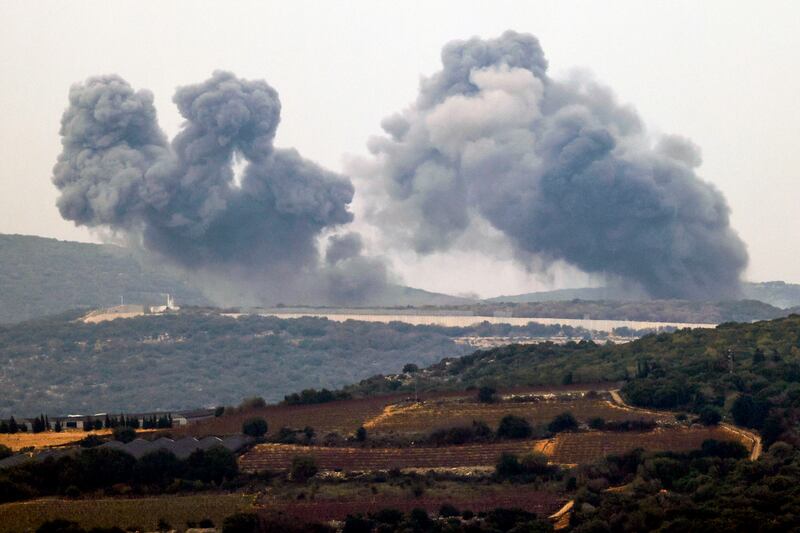The year 2023 is ending on a tragic note in the Middle East, with Israel reacting to Hamas’s unprecedented attack on October 7 with an assault on Gaza that is uniquely devastating in terms of the pace and scale of civilian casualties. The war on Gaza has amplified international political dynamics that have been playing out in the region for a while, particularly regarding Iran’s interventions, the role of the UN in regional conflicts and US foreign policy towards the Middle East. Those three issues will continue to play a role in setting the scene for the region in 2024. Alongside continuing challenges in places like Libya, Syria and Lebanon, they present a gloomy scenario for what lies ahead. But there is also positive change happening at the level of diplomatic assertiveness by major countries in the Gulf.
When news of Hamas’s October 7 assault broke out, many observers chose to frame the attack as mainly a reaction to Israel’s long occupation of Palestinian territory. While not denying the importance of this context, the trajectory of events in the region since then has also highlighted the role of Iran as a destabilising actor in the war. Iran-backed Houthis have been engaging in a series of attacks on ships in the Red Sea under the pretext of targeting ships linked with Israel. And Iran itself, according to the US military, attacked a ship using a drone in the Indian Ocean using the same pretext.
These and other incidents related to Iran’s regional interventions in the Middle East are happening against the backdrop of its restoration of diplomatic ties with Saudi Arabia in March; the administration of US President Joe Biden’s attempts to resurrect the nuclear deal with Iran that his predecessor had unravelled; and the US deal brokered in August which saw Iran release US hostages in return for accessing $6 billion in oil revenue. They are also happening while the US, UK and EU continue to impose sanctions on Iran. Following the recent Iranian drone attack on the ship in the Indian Ocean, UK Foreign Secretary David Cameron said Iran and its proxies need to be sent an “incredibly clear message that this escalation will not be tolerated”.
And yet, especially with US elections looming in November 2024, there is still no appetite in Washington to develop a comprehensive strategy towards Iran’s interventions in the Middle East, or to acknowledge the importance of Iran as a factor in the ongoing war between Israel and Hamas. This selective handling of Iran includes Washington’s adoption of a largely disengaged approach to Tehran’s role in Lebanon, Syria and Yemen, and is one of the factors that led Arab countries to try to contain the risk of that role through diplomacy. Saudi Arabia’s restoration of bilateral ties with Iran is one manifestation of this, as is the Arab League’s normalisation of relations with the Iran-backed government of Syrian President Bashar Al Assad in May.
What 2023 has highlighted is the centrality of US influence in the region, whether through action or inaction. The new year will continue to see the longstanding implications of the existing status quo in Syria at play, with the anti-government protests that began in Sweida in August persisting, the bombing of Idlib by government forces and Russia continuing, and attacks by Iran-backed militias on US bases in north-east Syria carrying on. None of these will stop unless Washington decides to design and implement a comprehensive strategy for the Middle East that addresses the destabilising role of Iran and its proxies and allies. The war between Hamas and Israel also will not end without a clear steer from Washington.
But at the same time, the year has shown that Arab countries are not waiting on the side-lines. The UAE’s presentation of a UN Security Council Resolution on Gaza in December, Qatar’s leading on hostage negotiations between Hamas and Israel, and Saudi Arabia’s bringing together of Arab and Islamic-world leaders in October are examples of how major countries in the region are trying to assert their diplomatic weight. This dynamic sets the scene for 2024, which is likely to see such countries increasing their diplomacy and influence.
Parallel to this will be ongoing failures. The Israel-Gaza war has underlined the weakness of the UN system and its desperate need for reform. Earlier in the year, the devastating floods in Derna showed the horrific implications of the bad governance that permeates Libya. Hezbollah’s involvement in launching attacks on Israel – limited as they may be – is a reminder of the de facto absence of the Lebanese state.
If anything, the year 2023 shone a light on the wide gap that exists among Arab countries. The majority are politically weak and grappling with domestic or regional conflicts and problems. Geopolitical and diplomatic weight in the Middle East has shifted firmly to the Gulf. The UAE’s successful hosting of Cop28, resulting in a historic agreement on transitioning away from fossil fuels, is a key illustration of this shift.
While next year looks likely to carry burdens similar to those of 2023 across the Middle East, it is important not to limit understanding of and attention to the region to its stubborn challenges. The influence of the region’s heavyweights is growing, and this is planting the seeds for new power configurations that will play out more vividly in 2024 and beyond.





